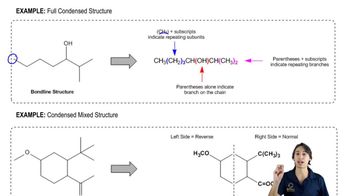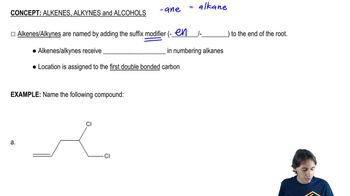Textbook Question
Draw structures for the following:
c. (3Z,5Z)-4,5-dimethyl-3,5-nonadiene
d. (3E,5E)-2,5-dibromo-3,5-octadiene
 Verified step by step guidance
Verified step by step guidance Verified video answer for a similar problem:
Verified video answer for a similar problem:



 4:28m
4:28mMaster How to name different types of double bonds or rings with a bite sized video explanation from Johnny
Start learning